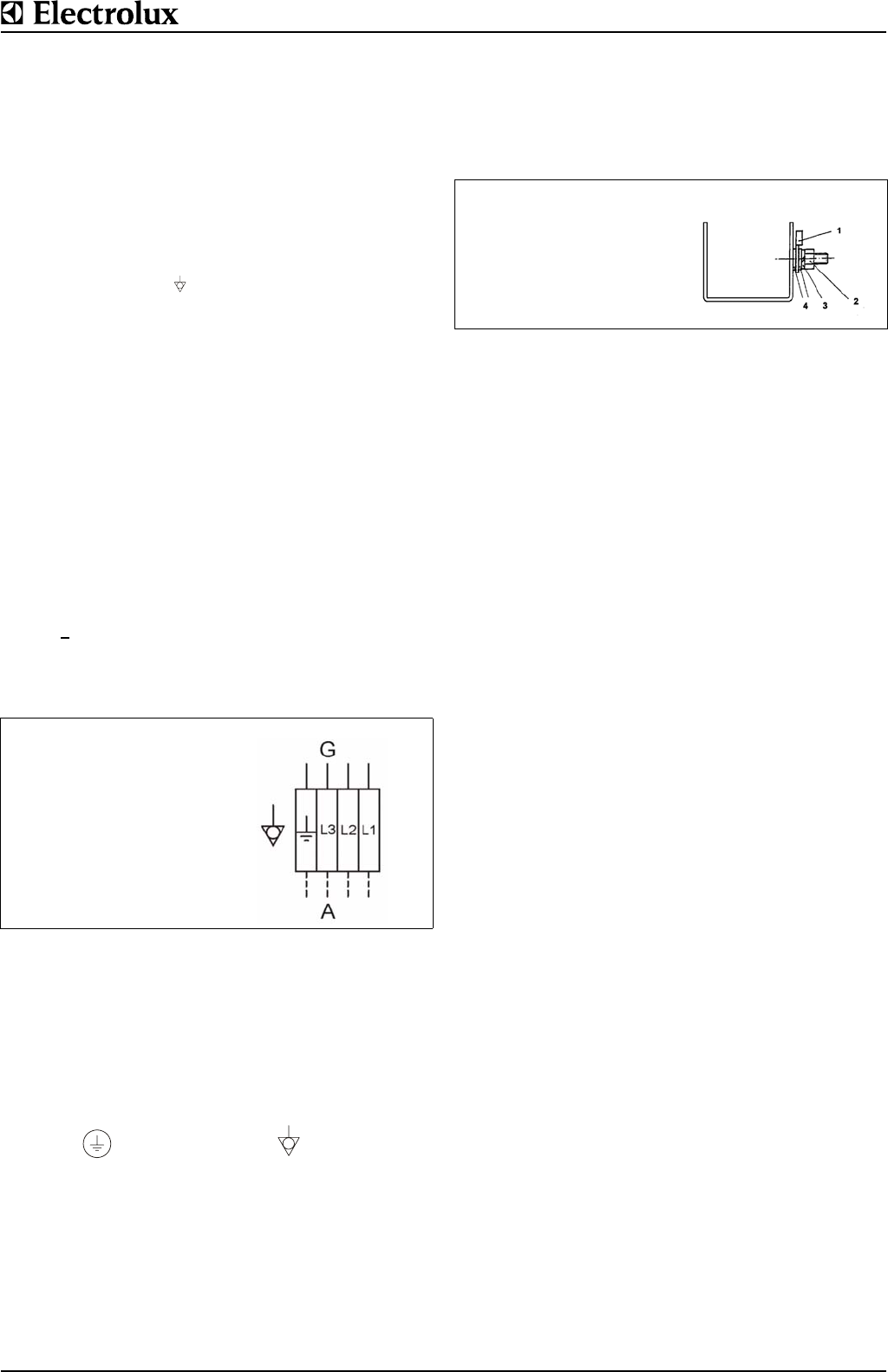
INSTALLATION INSTRUCTIONS
Page 8 62.9581.01_UL
4. ELECTRICAL CONNECTION
Each appliance is accompanied by a complete connection and
wiring diagram enclosed. This contains full details of the
technical specifications (electrical rating, voltage, amperage
etc.)
Check and ensure that the mains voltage agrees with the
voltage given on the specification plate.
N.B.:
• The corresponding arrangements must be made on-site for
the earthing connection and fuse protection for the
appliances.
• The appliance must be connected to a potential
equalization system with a minimum conductor cross-
section of 10 mm². The correspondingly marked
connection terminal must be used for this purpose. When
set up in block configuration, all appliances must be
interconnected as potential equalization.
• The appliance is designed for connection to fixed lines. If
the appliance is fitted directly to a masonry plinth without
an appliance plinth, the supply must be located at the
prescribed place. In this case, the protecting tube may not
protrude from the plinth. If a CNS base is used, the
protecting tube may not protrude more than 10 cm from the
floor.
• After installation, the shock-hazard protection for live and
functionally insulated parts must be secured.
• An isolating device working on all poles and with a
minimum contact opening of 3 mm must be provided on
site.
• When faulty-current circuit breakers are used, ones for a
rated tripping current of 30 mA should be used.
• When using a faulty current-operated circuit-breaker (in the
case of an existing circuit-breaker and for new installations)
only a
one pulse-current sensitive faulty current-operated
circuit-breaker may be connected in series in conjunction
with these appliances.
4.1 CONNECTION TERMINALS
Power is taken from a ready-installed electric cable which
protrudes 1.5 m from the floor or the wall.
The connection terminals for the appliance are located behind
the front right-hand cover (B). In order to connect the
appliance, the front panel must be removed (see Chapter 2.1
on page 7).
Power cable connection as per the electrical diagram.
The terminal screws on the range frame are marked as
follows:
Earth wire Potential equalization
Additional terminals for power optimizing systems (EO/SI) or
potential-free contacts (PK) for the external monitoring of the
appliance are available as options. The connections are made
as per the electrical diagram.
4.2 CONNECTION TO THE POTENTIAL
EQUALIZATION SYSTEM
The appliance is to be connected to a potential equalization
system with a minimum conductor cross-section of 10 mm².
Use the appropriately marked terminal studs for this purpose
(EN 60 335). The connection consists of an M6 threaded bolt
and is located on the frame of the appliance..
4.2.1 WIRING
Power monitoring devices require the following information
from all appliances:
- Position of the ON-OFF switch
- Operating status of thermostats, electronic controllers
etc.
If an appliance has several controllers, each circuit is
allocated its own control circuit.
This information is passed on the monitoring devive via 4
different lines.
For ranges, the power contactors are usually fitted externally,
and internally for kettles and pans. For most appliances the
internal wiring for a power-monitoring system can be fitted as
an option.
A = Mains connection
G = Appliance outgoing
section
Fig.9 Connection terminals
1 Cable shoe * 6 mm
2Nut M 6
3 Spring washer M 6
4 Washer M 6
Fig.10 Connection to the potential equalization system
Line A signals the switching status (power switch on or
off) of the appliance (voltage 24÷230V) and is
connected to the secondary side of the power
switch.
Line B signals the operating status (heating on or off) of
the appliance and is connected to the thermostat
or. controller pcb. Lines A and B may not be of
different voltages.
Line C releases the appliance. When the power
monitoring device releases the appliances, lines
B and C are linked to each other by an outside
contact.
Line D forms the reference potential for the control
voltage for the lines interrogated.


















